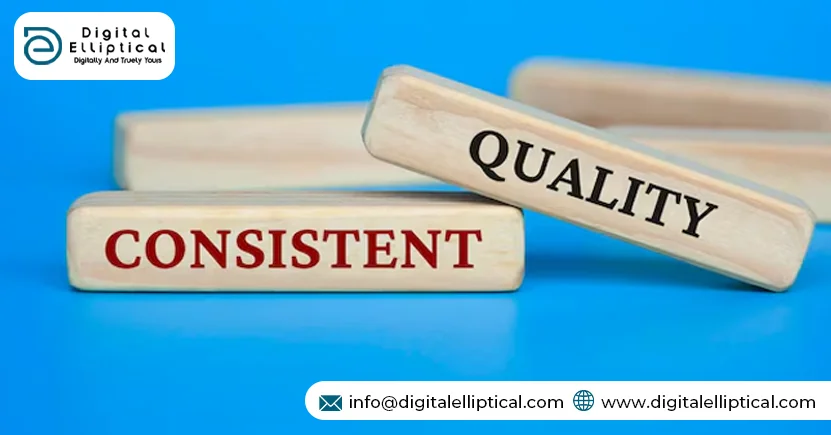5 ways data quality adds value to your retail business:
In comparison to other industries around the world, the retail industry is extremely competitive and rapidly evolving. Every year, new market entrants contribute to a more competitive corporate climate. As with any other business field, data is a critical enabler for success. Because in today's environment, every touchpoint generates data, optimization is essential for success.
The significance of data quality is critical to attaining retail success. Clean, accurate, and reliable data serve as the cornerstone for retailers' goals, operations, and consumer experiences.
In the digital age, data is often considered the lifeblood of a business. It informs decisions, shapes strategies, and drives innovation. However, not all data is created equal. Bad data—data that is inaccurate, incomplete, or outdated—can have catastrophic effects on your business. Here's how:
How Bad Data Can Ruin Your Business:
1. Poor Decision Making
Decisions based on bad data can lead to disastrous outcomes. Whether it's misjudging market trends, misunderstanding customer needs, or allocating resources inefficiently, the consequences can range from lost revenue to complete business failure.
2. Damaged Reputation
When errors caused by bad data become visible to customers—such as incorrect billing or failed deliveries—your business's reputation can suffer. In the era of social media, such mistakes can quickly escalate, leading to a loss of trust and a tarnished brand image.
3. Legal and Compliance Issues
Bad data can result in non-compliance with regulations, leading to legal penalties and fines. For example, inaccurate financial reports can violate accounting standards, and incorrect customer information can breach data protection laws.
4. Wasted Resources
Maintaining and correcting bad data consumes time and resources. Employees spend hours sifting through data inaccuracies instead of focusing on their core responsibilities, leading to decreased productivity and increased operational costs.
5. Hindered Growth
Ultimately, bad data can stifle your business's ability to grow. It can mislead you about market opportunities, hinder customer relationship management, and prevent you from making the data-driven innovations necessary to stay competitive.
Preventing the Perils of Bad Data
To safeguard your business, invest in robust data management practices. This includes regular data audits, implementing data validation processes, and training staff on the importance of data quality. By ensuring your data is accurate and reliable, you can make informed decisions that propel your business forward. Remember, in the world of business, the quality of your data can mean the difference between success and failure. Don't let bad data be the downfall of your hard-earned success.
The Art of Seamless Customer Experience: Transforming Interactions into Lasting Impressions
In the bustling corridors of retail and service industries, the term 'customer experience' resonates with more significance than ever before. It's the heartbeat of business success, the differentiator that can elevate a brand from mediocrity to market leadership. But what does it take to deliver a seamless customer experience that not only meets but exceeds expectations? Let's explore the key strategies that can transform customer interactions into lasting impressions.
1. Omnichannel Presence
The modern customer navigates a maze of touchpoints, from brick-and-mortar stores to online platforms. A seamless experience requires a harmonious omnichannel approach where each channel is interconnected, allowing customers to pick up where they left off, regardless of the medium.
2. Personalization
Imagine walking into a store where the staff knows your name, preferences, and purchase history. Personalization is the invisible thread that weaves a deeper connection with customers. Leveraging data analytics to tailor recommendations and communications can make each interaction feel like a homecoming.
3. Speed and Convenience
Time is the new currency, and convenience is its best ally. Streamlining processes to reduce wait times, simplifying navigation on websites, and offering fast shipping options are all facets of delivering a frictionless experience that values the customer's time.
4. Proactive Support
Why wait for a storm when you can carry an umbrella? Proactive customer support anticipates issues before they arise, offering solutions and support that reassure customers they're in capable hands. Whether it's a preemptive service email or a chatbot ready to assist, being one step ahead is the hallmark of seamless service.
5. Consistent Quality
Consistency is the glue that holds the customer experience together. It's the assurance of quality at every turn, the unwavering standard that customers grow to trust. Whether it's product quality or service excellence, consistency cements customer loyalty and fosters a sense of reliability.
In conclusion, a seamless customer experience isn't just about eliminating hurdles; it's about creating a journey so smooth that customers glide from one interaction to the next, propelled by the sheer delight of a brand that understands and values them. In the tapestry of business, those who master this art will find themselves at the forefront, leading the charge in a world where the customer experience isn't just a priority, it's everything.
Why invest in data management?
Investing in data management is crucial for several reasons:
-
Improved Decision-Making: High-quality data allows businesses to make informed decisions, reducing the risk of costly mistakes.
-
Efficiency and Productivity: Proper data management streamlines processes, saving time and resources by avoiding data duplication and ensuring easy access to information.
-
Enhanced Customer Experience: Accurate data enables personalized customer interactions, leading to improved satisfaction and loyalty.
-
Competitive Advantage:Businesses that leverage data effectively can gain insights that provide a competitive edge in the market, identifying trends and opportunities ahead of competitors
Conclusion
A seamless customer experience isn't just about eliminating hurdles; it's about creating a journey so smooth that customers glide from one interaction to the next, propelled by the sheer delight of a brand that understands and values them. In the tapestry of business, those who master this art will find themselves at the forefront, leading the charge in a world where the customer experience isn't just a priority, it's everything.




